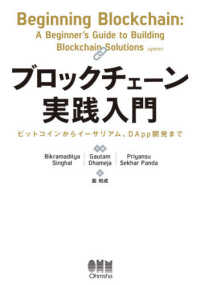- ホーム
- > 洋書
- > ドイツ書
- > Humanities, Arts & Music
- > Linguistics
- > general surveys & lexicons
Full Description
The author studies ethnic stereotypes in the history of English from the perspective of Cognitive Linguistics. He views an ethnic stereotype as an idealised cognitive model (ICM) which consists of a cluster of metonymic submodels (such as BODY, CUISINE, NAME, etc.). Each submodel may trigger the formation of an attributive ethnonym, which ascribes some attribute to the target group. While such terms are mostly derogatory, context plays a crucial role in their perception. The analysis proper focuses on foodsemic ethnonyms (most of which activate the submodel of CUISINE). Out of 168 items, above 50% follow the «FOODSTUFF FOR ETHNIC GROUP» or «FOODSTUFF EATER FOR ETHNIC GROUP» metonymy. Most examples come from Am.E., with Mexicans being the most frequently described target group.
Contents
Contents: Cognitive approach to categorisation - The axiological factor in ICMs - Social categorisation - Social psychological perspective on stereotypes - Food and humans - Theories of ethnicity - Attributive ethnonyms - Foodsemic ethnonyms in the history of English.








